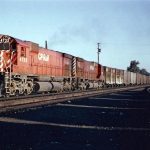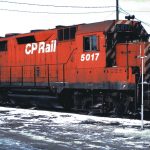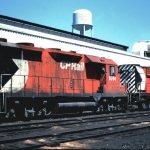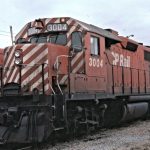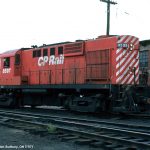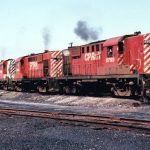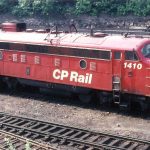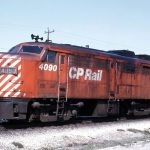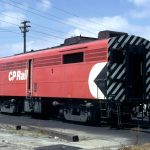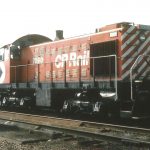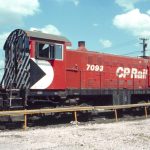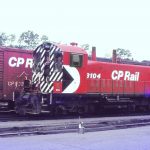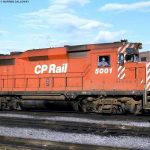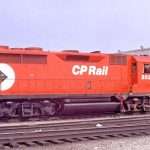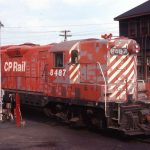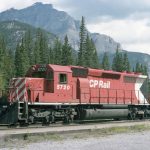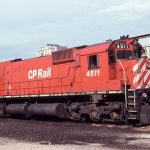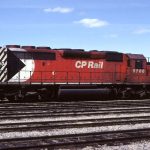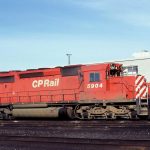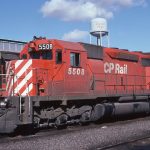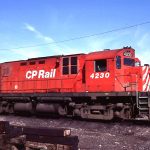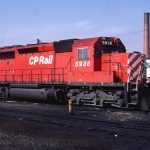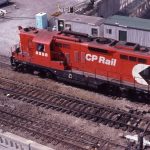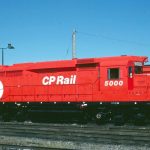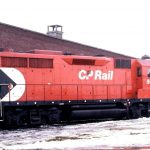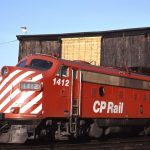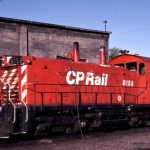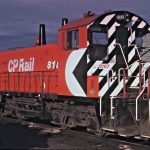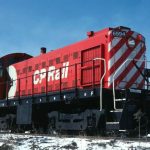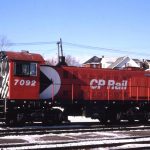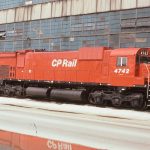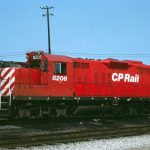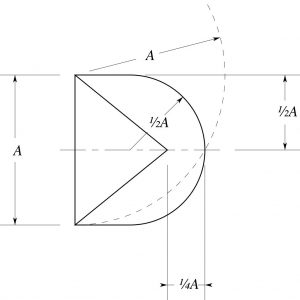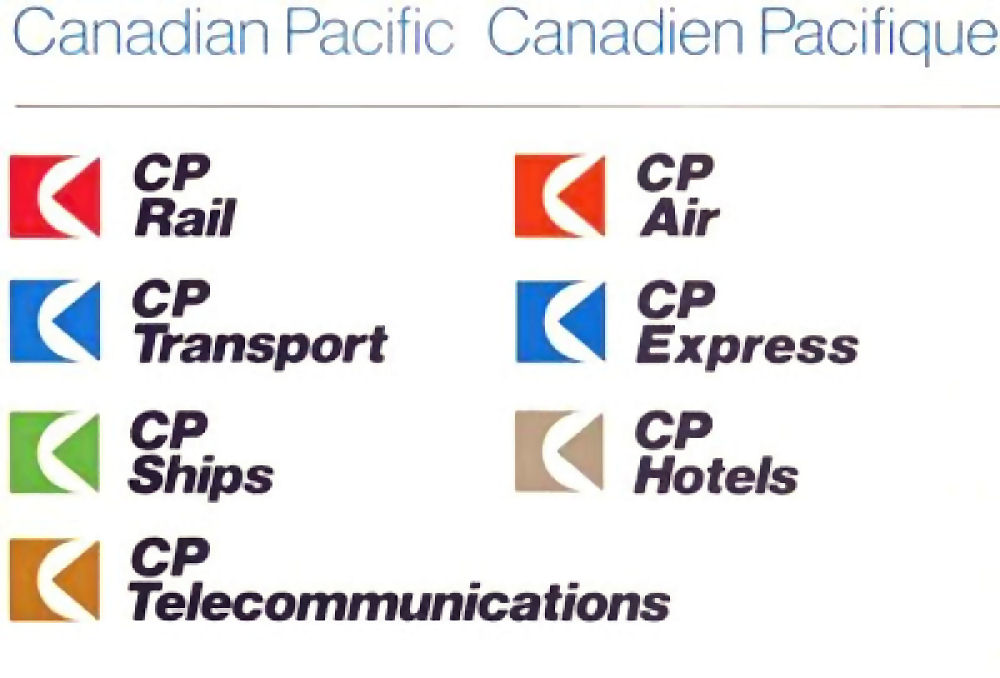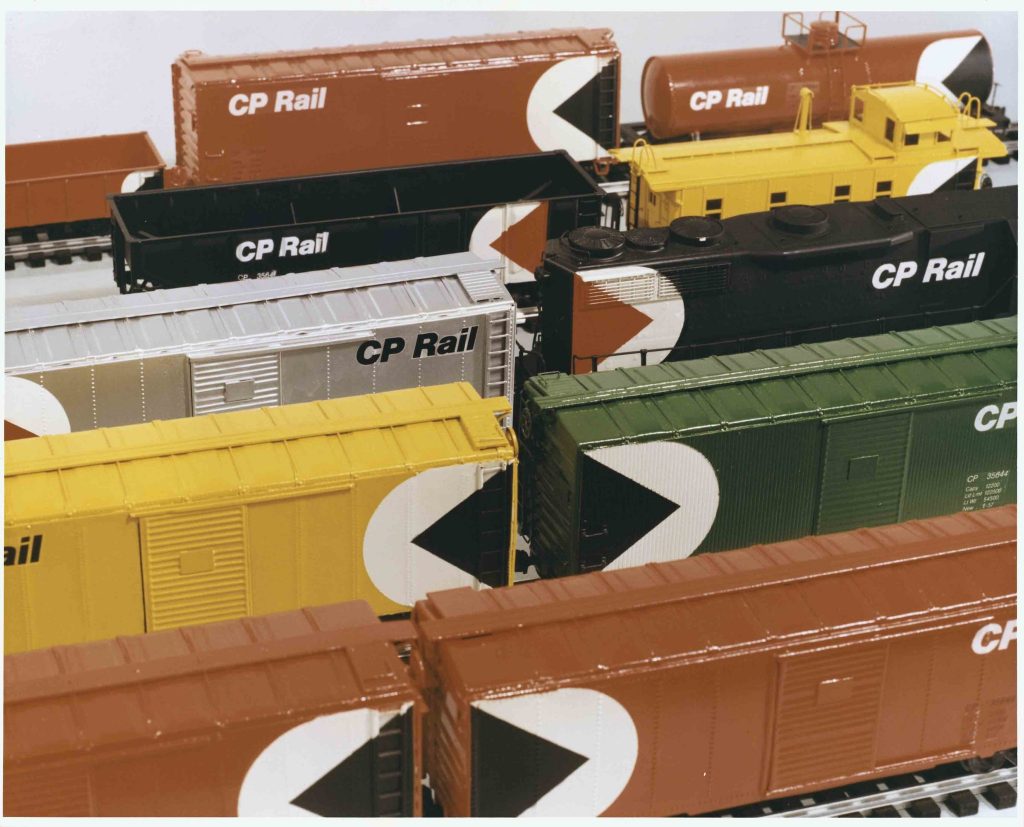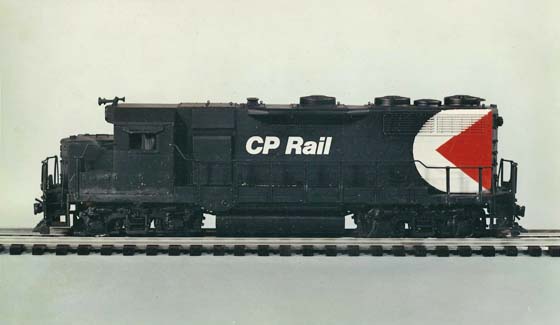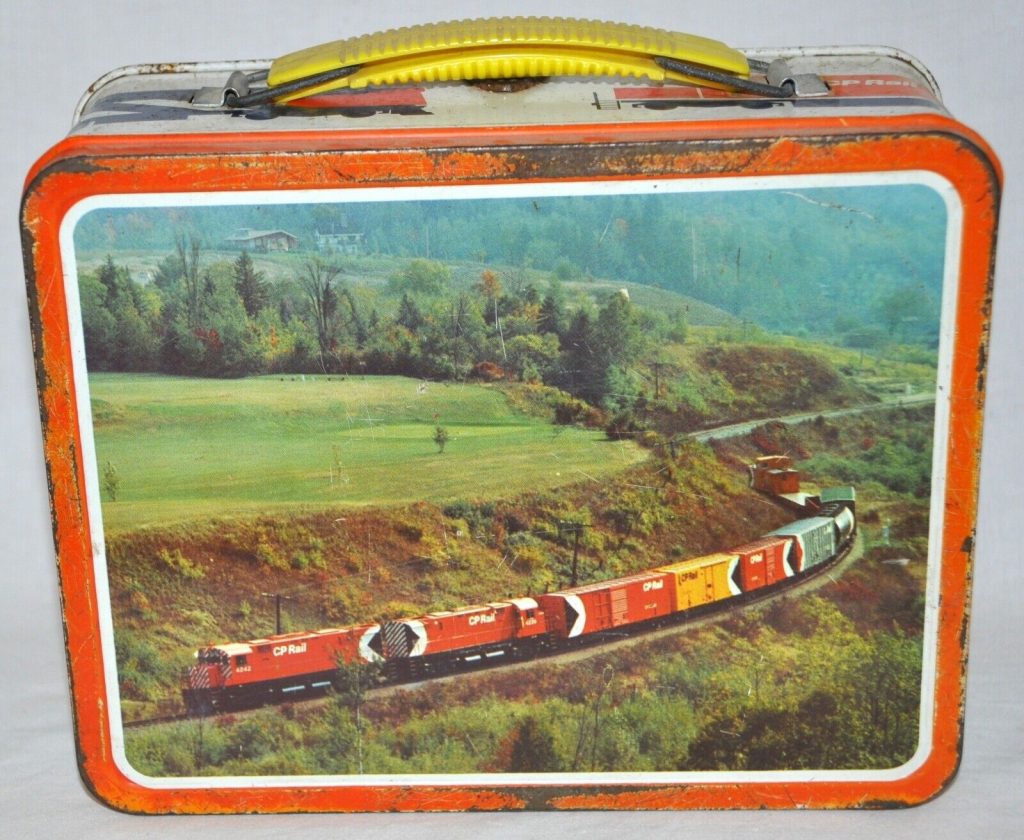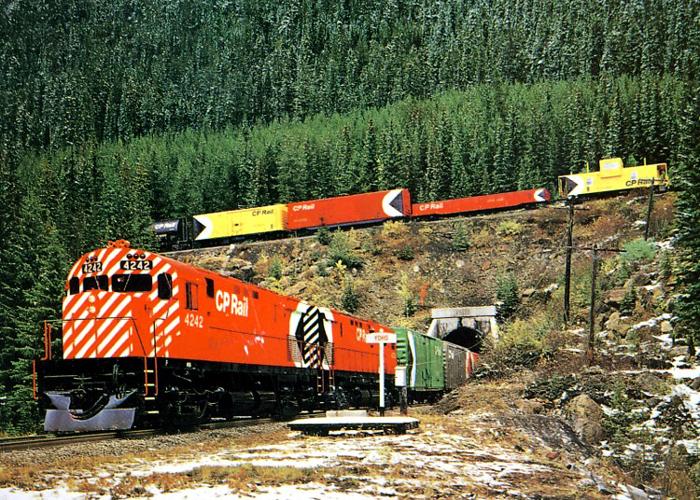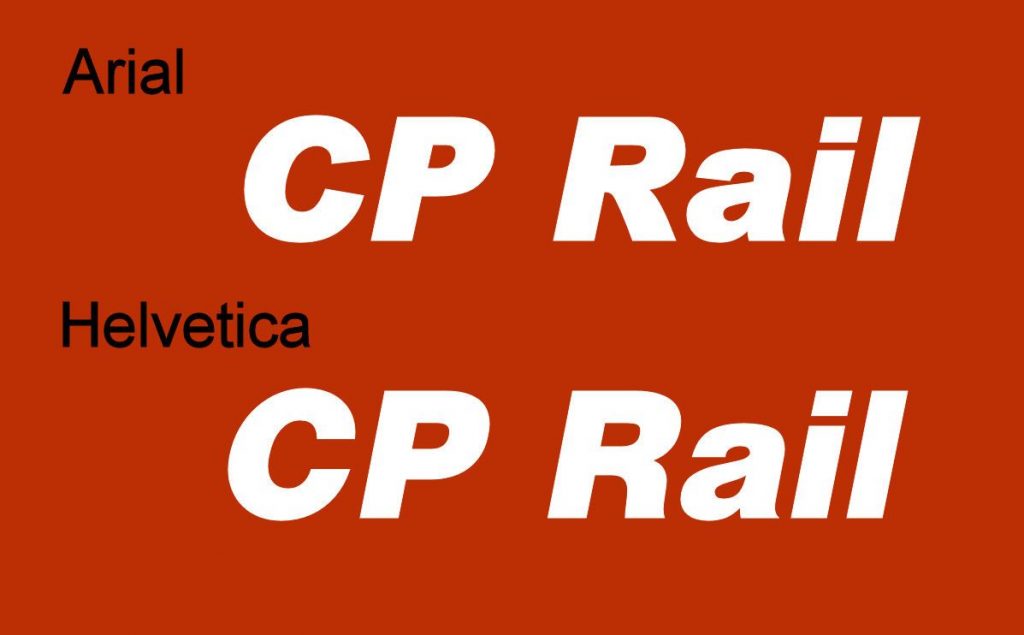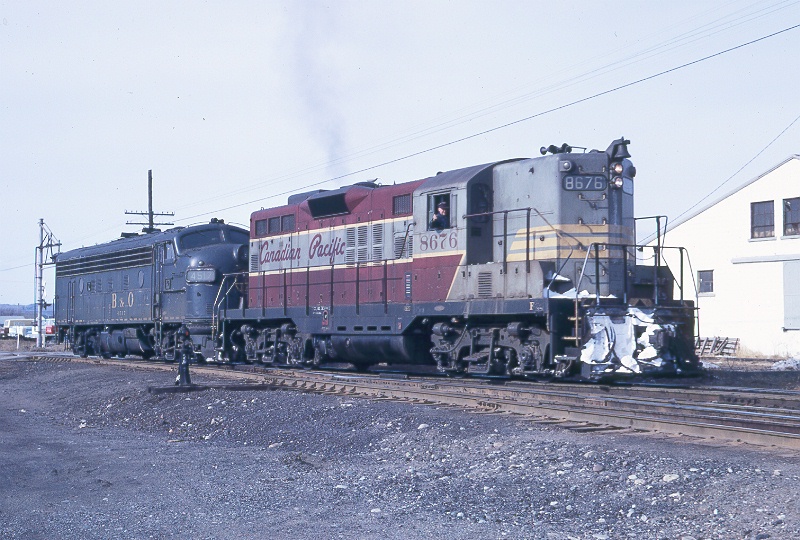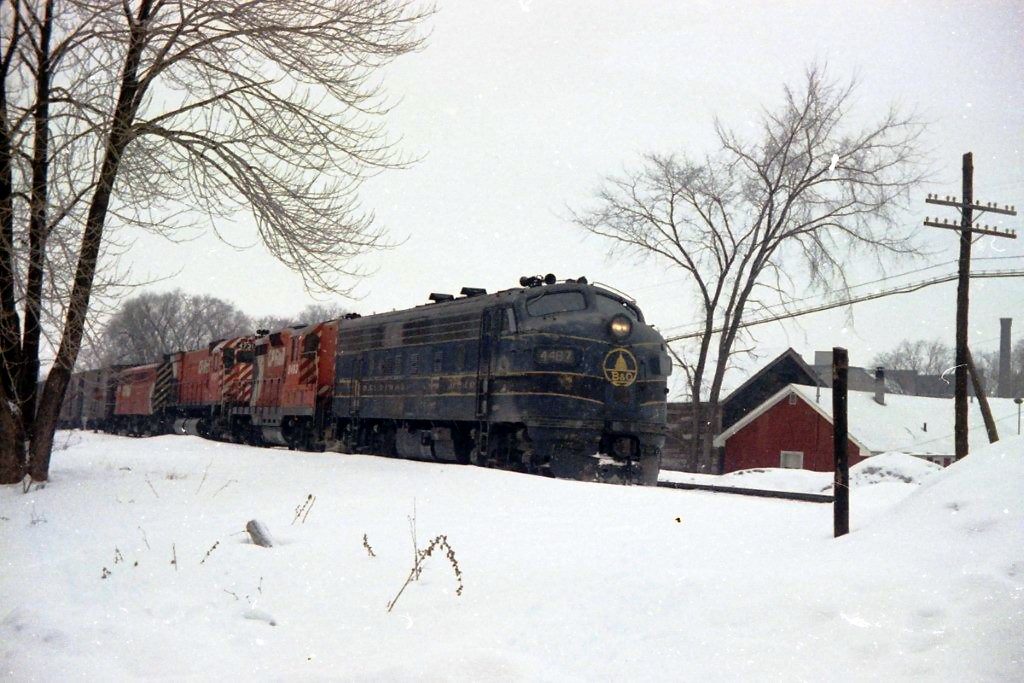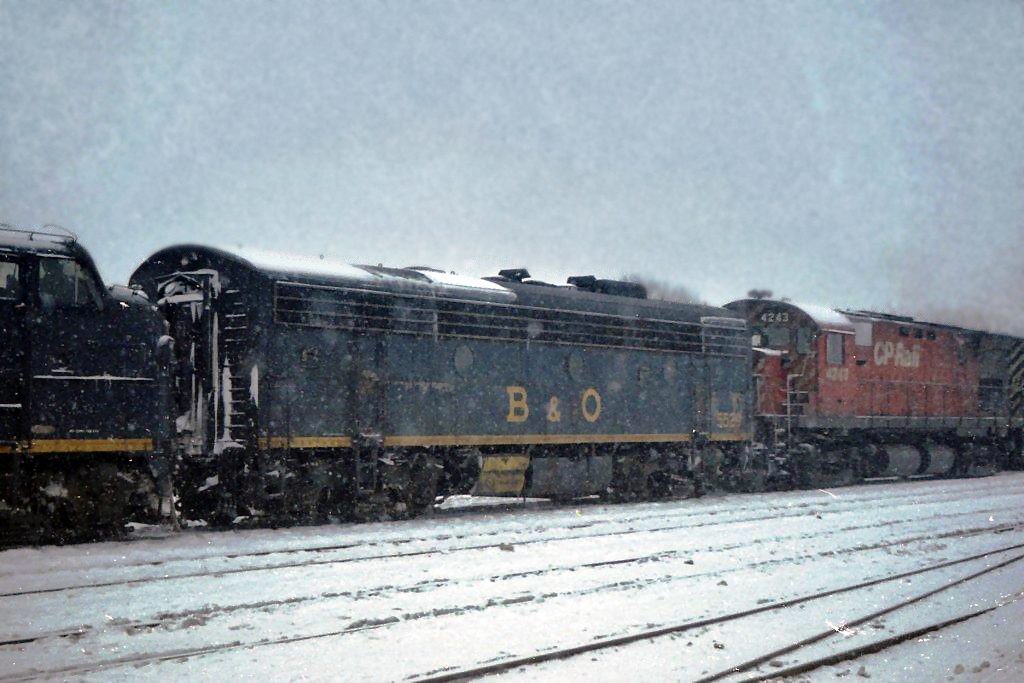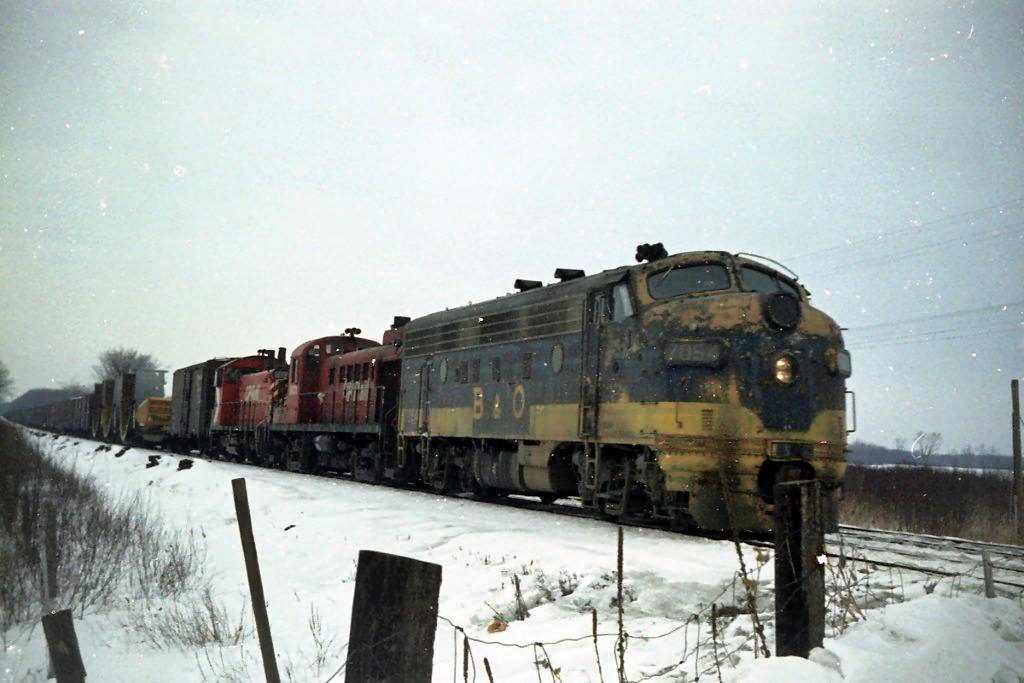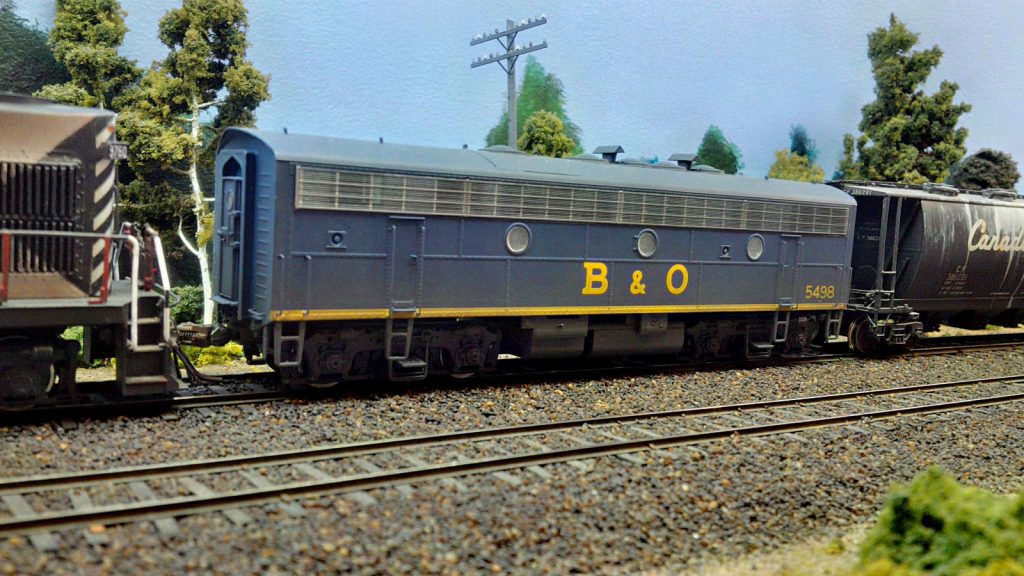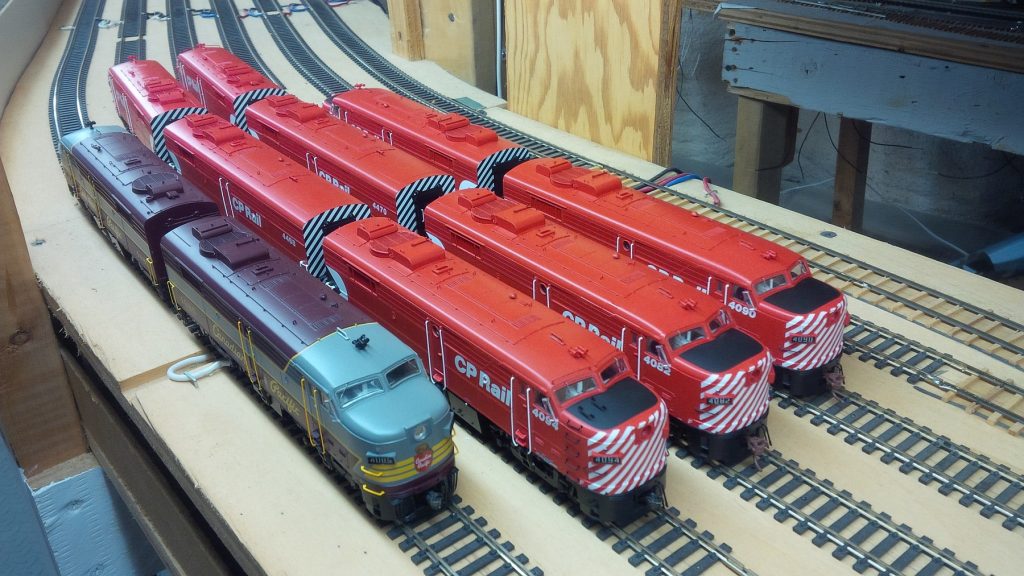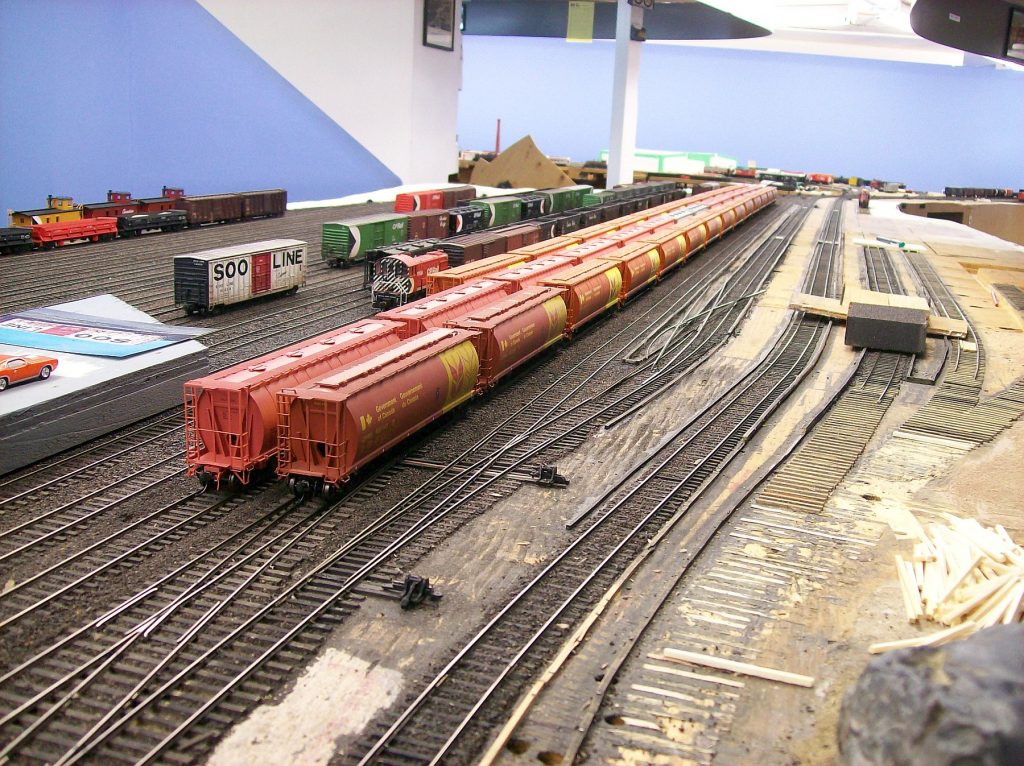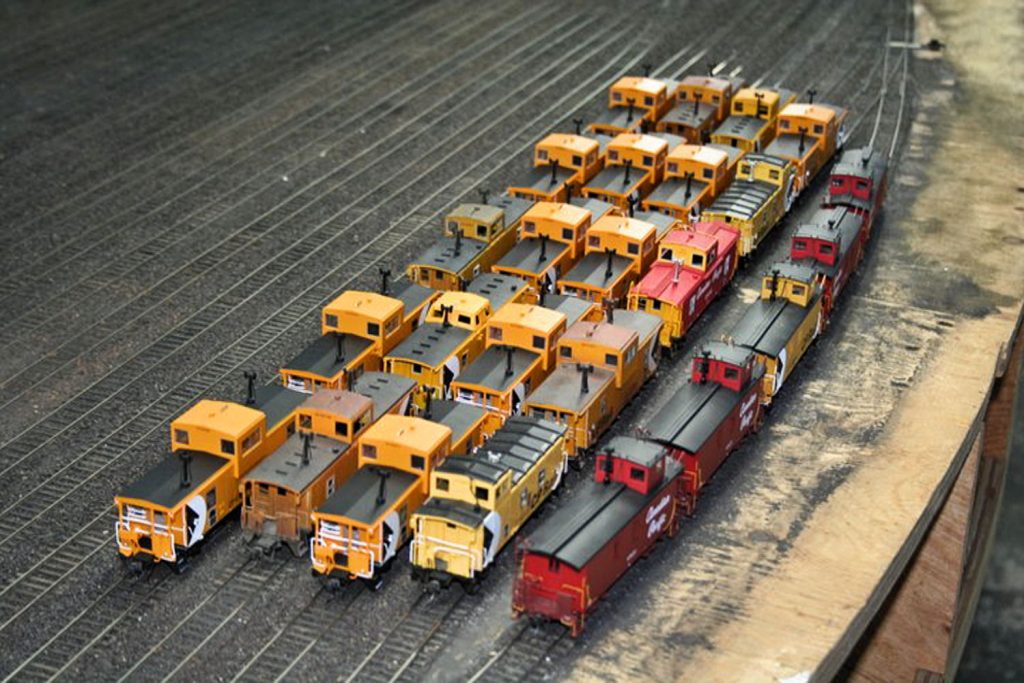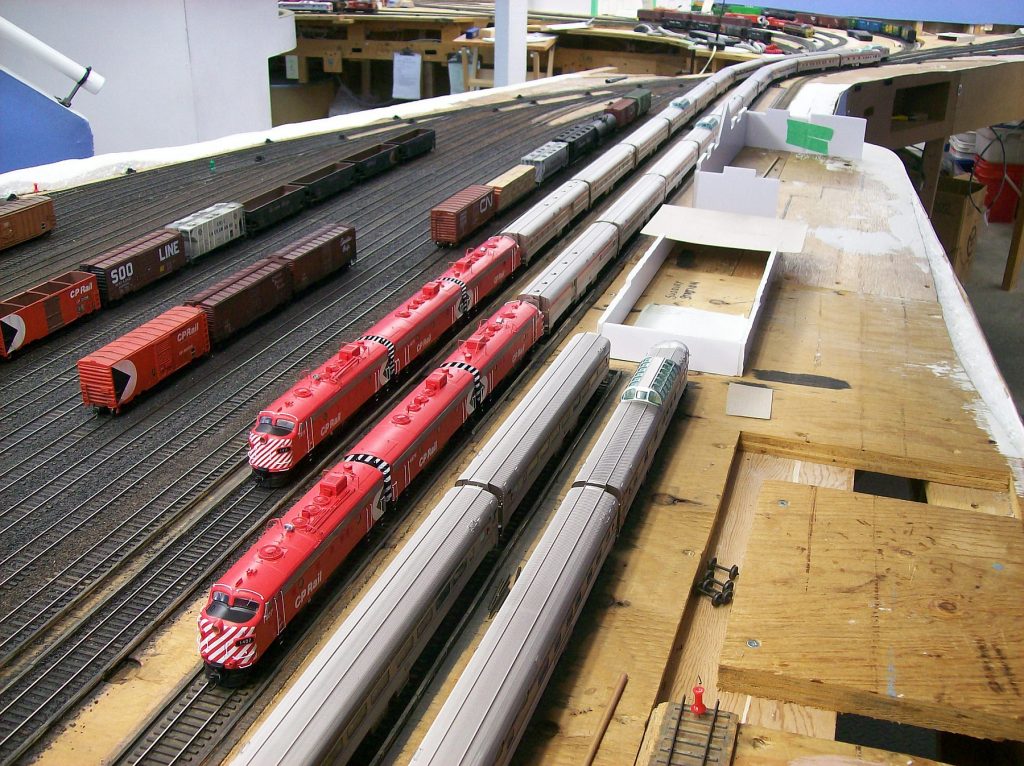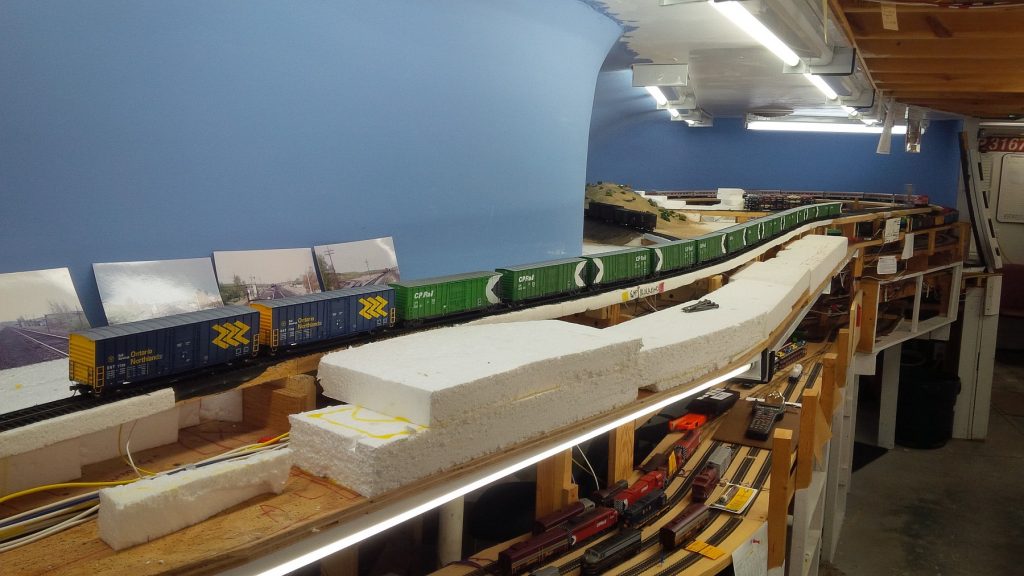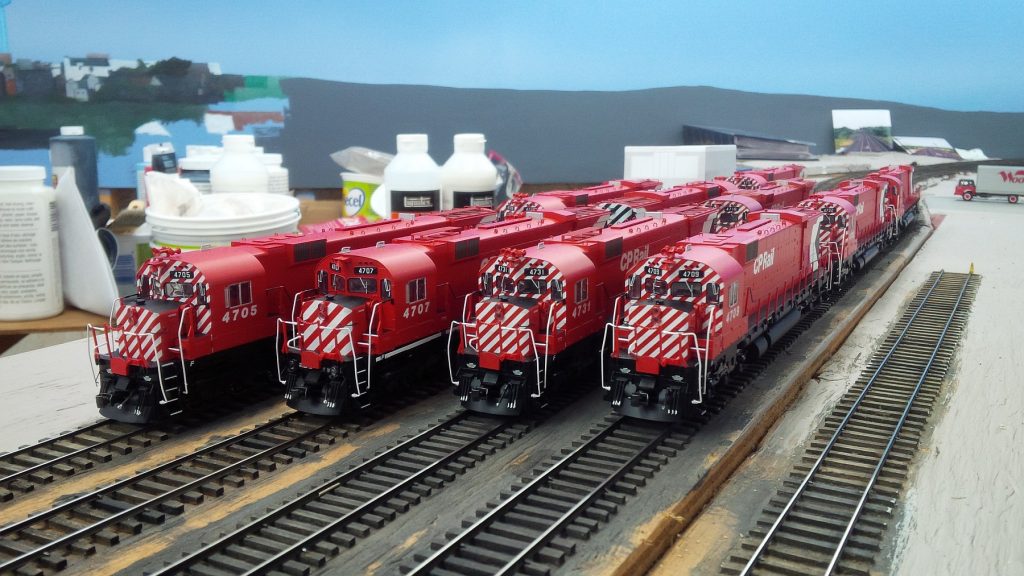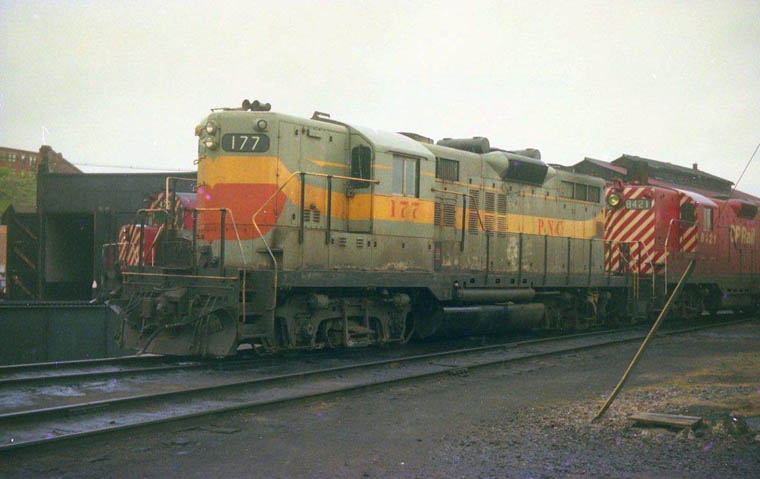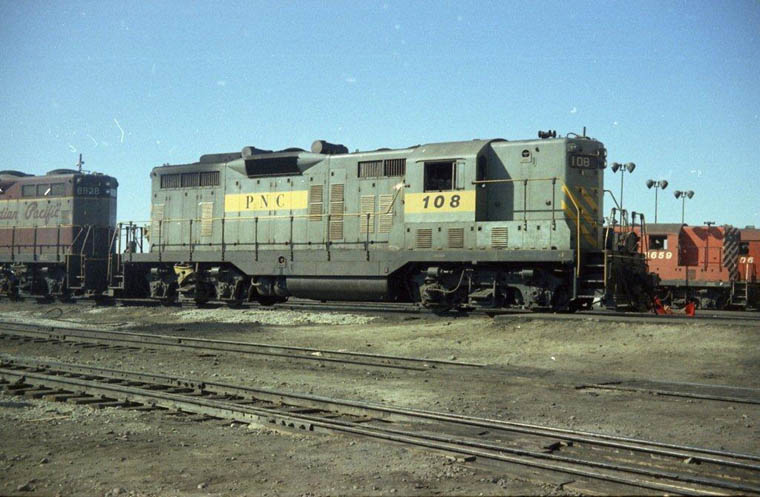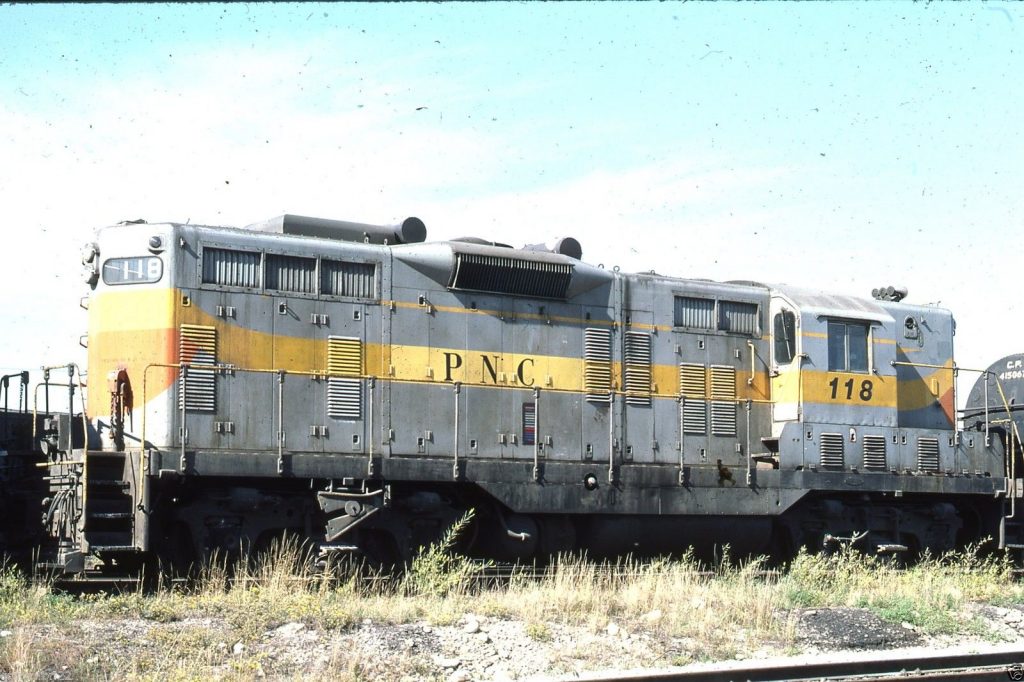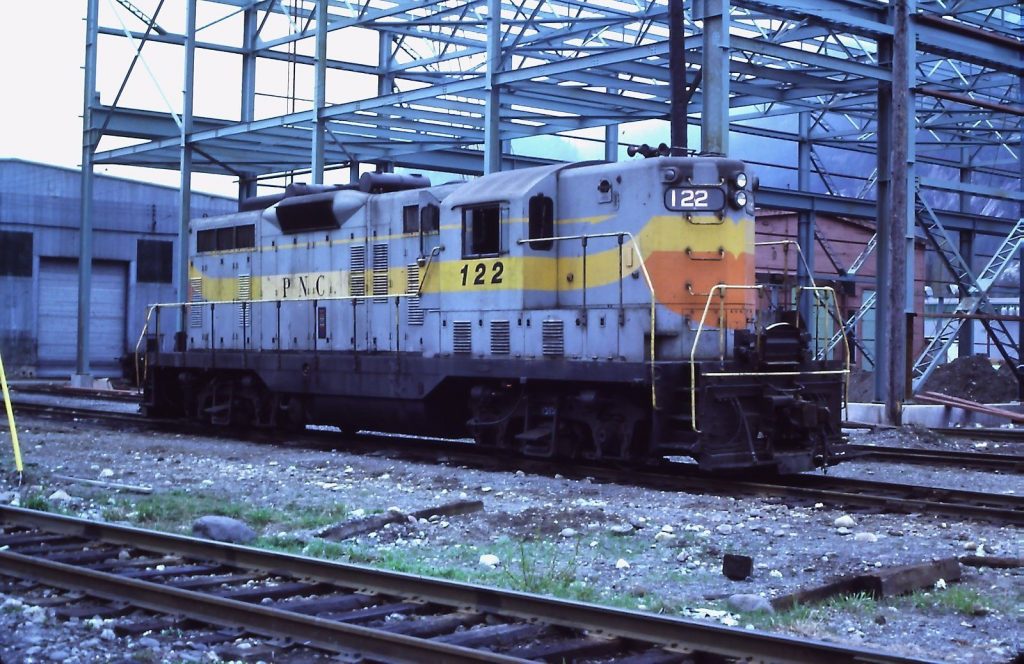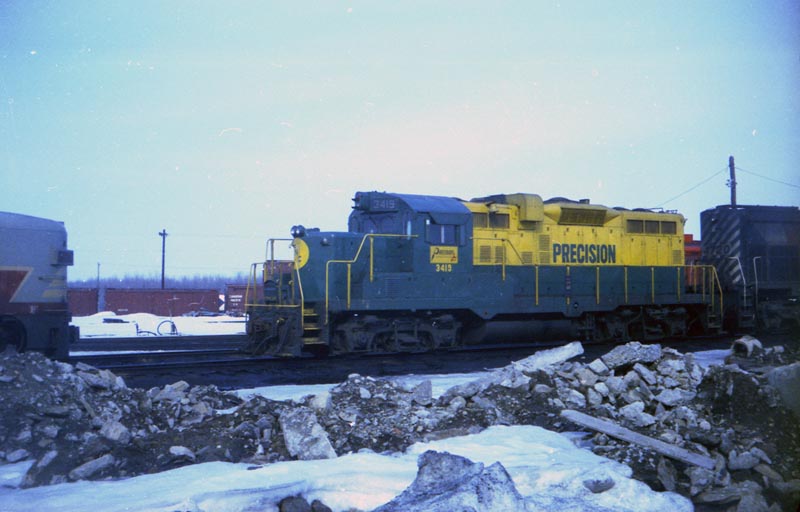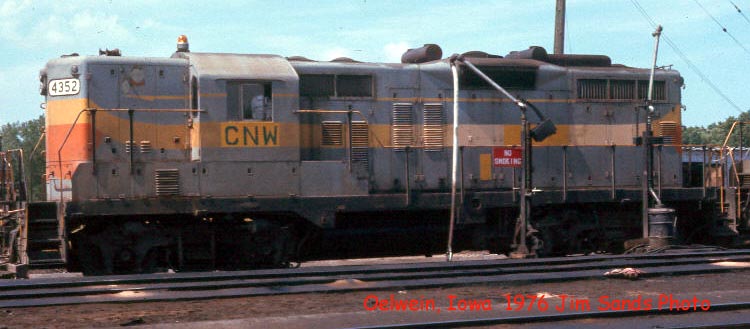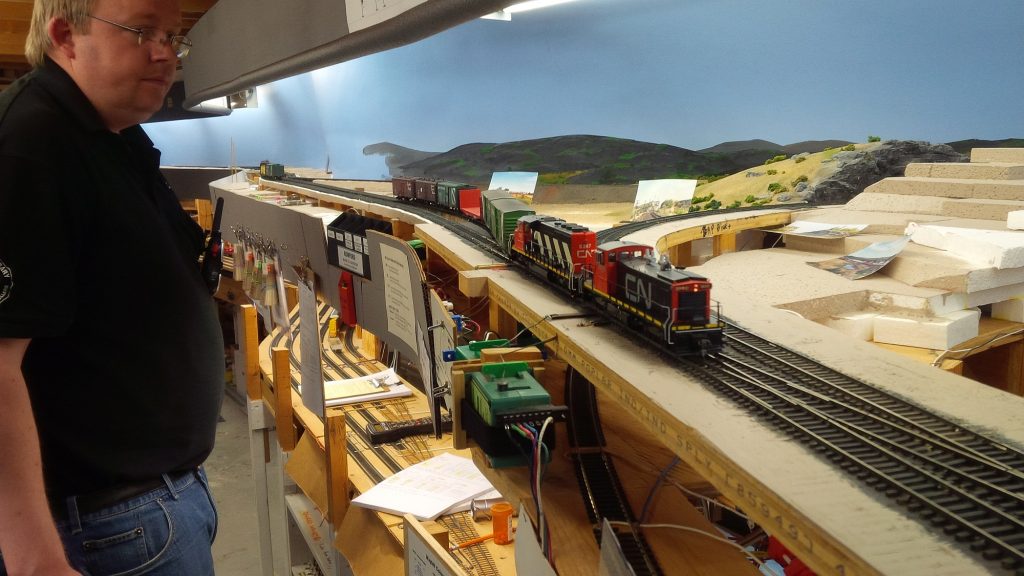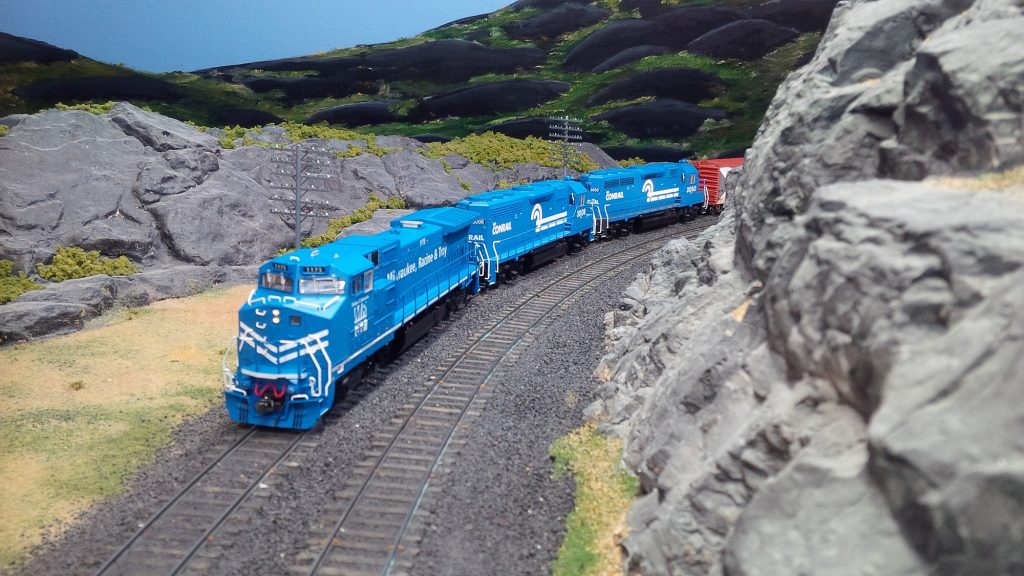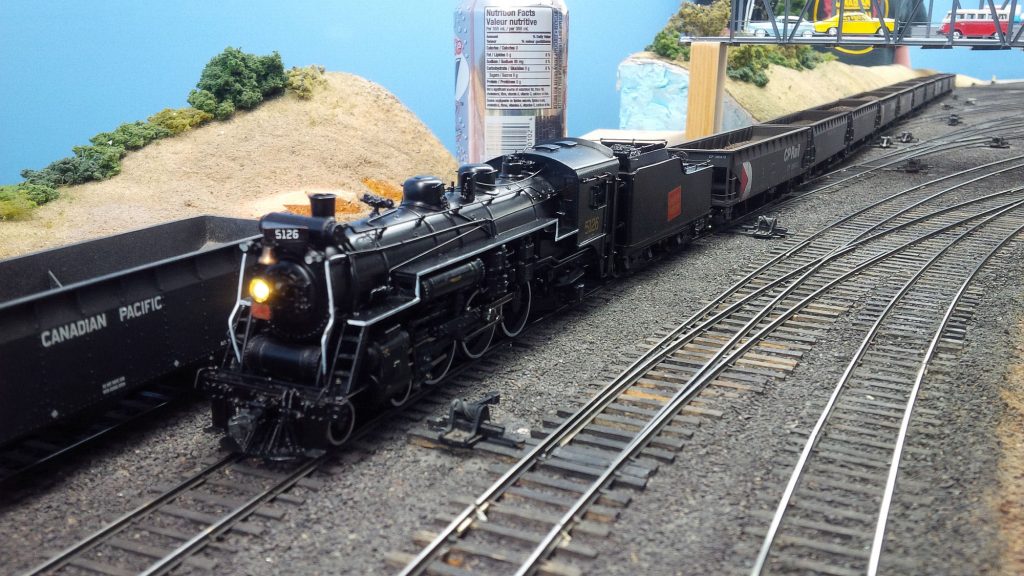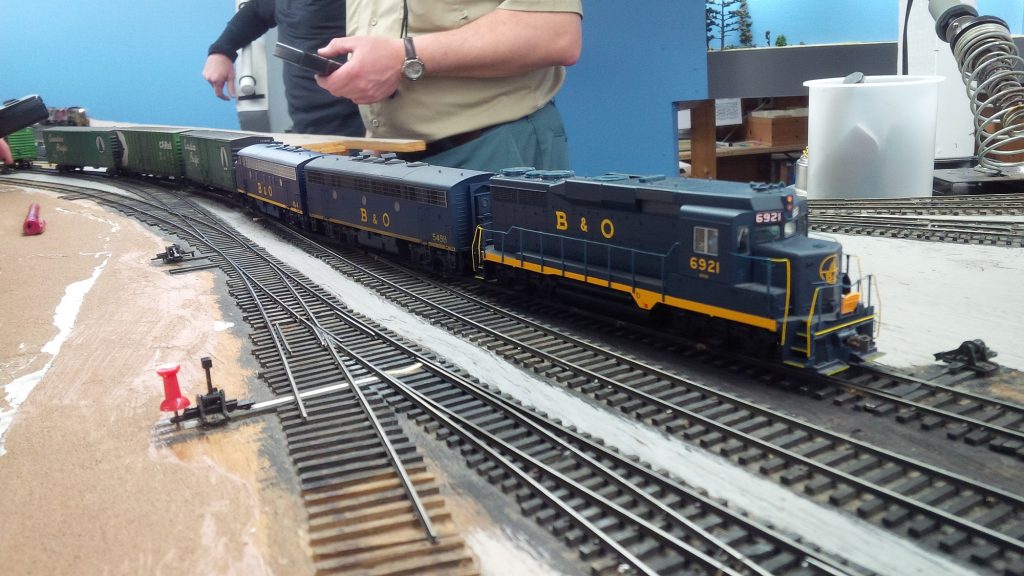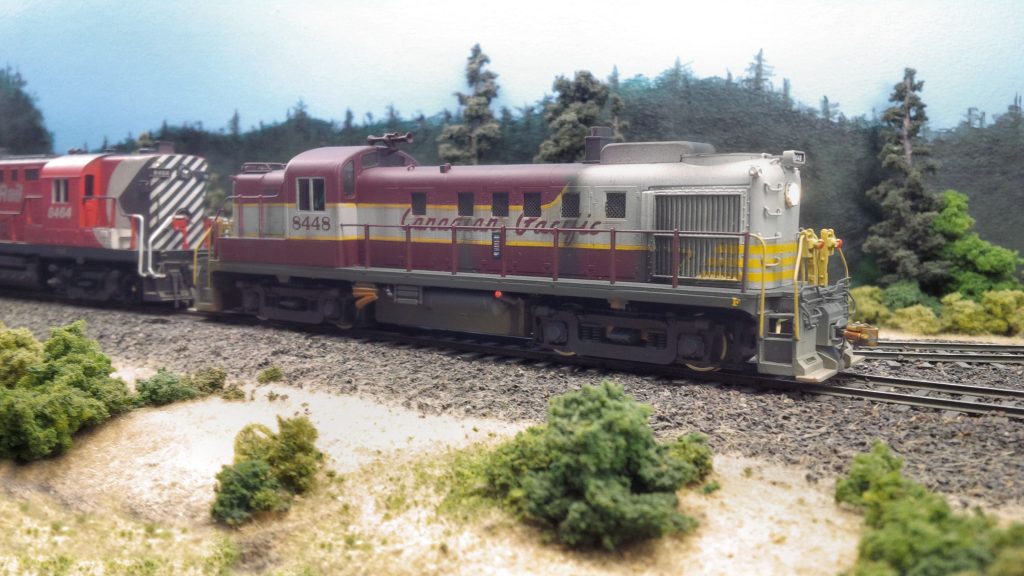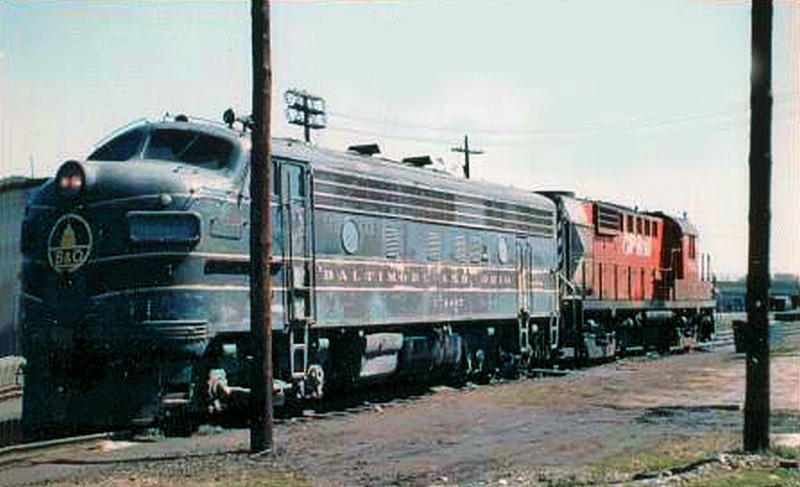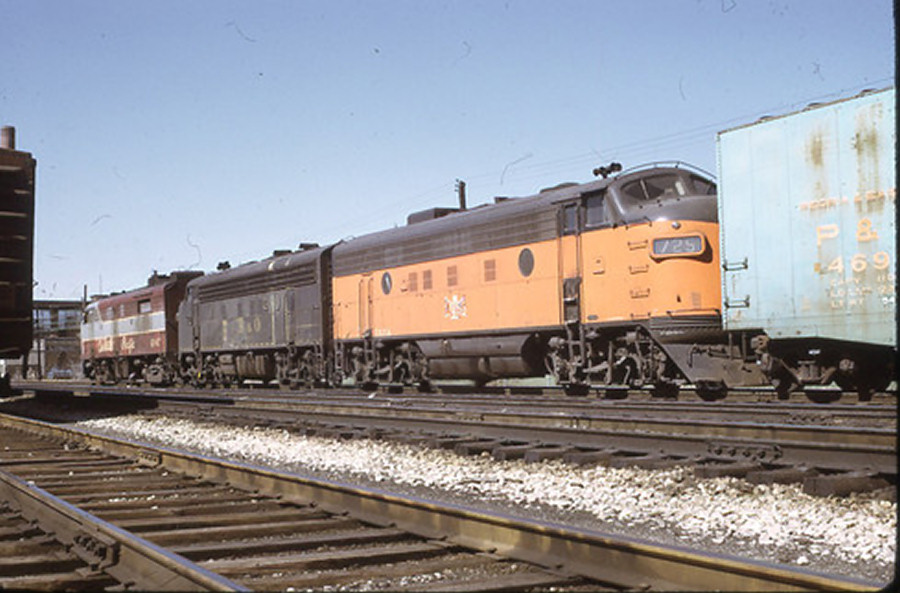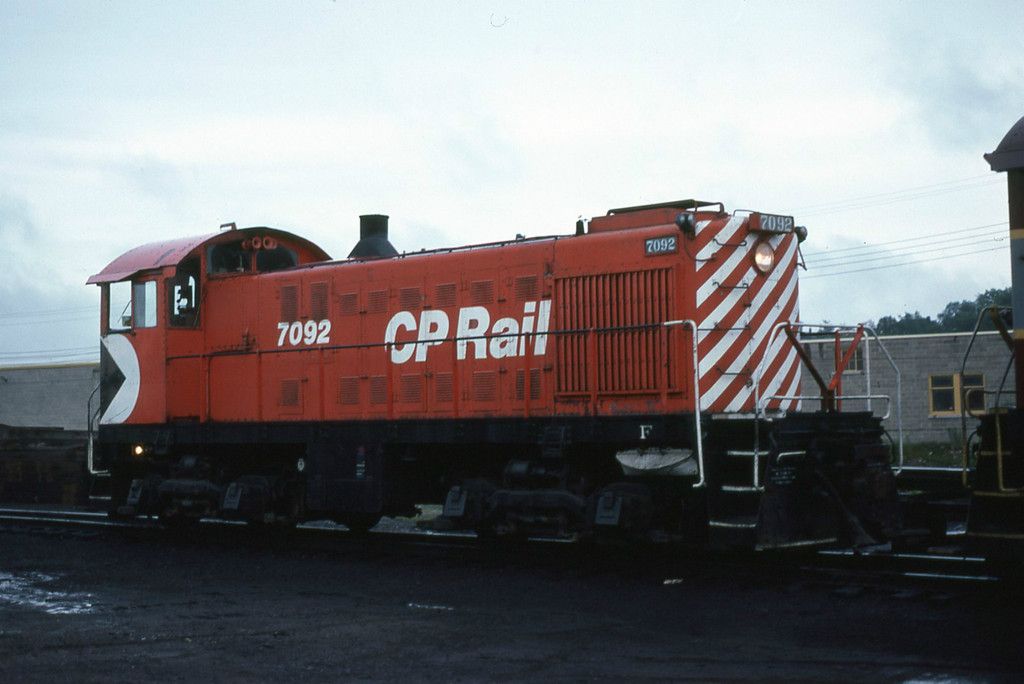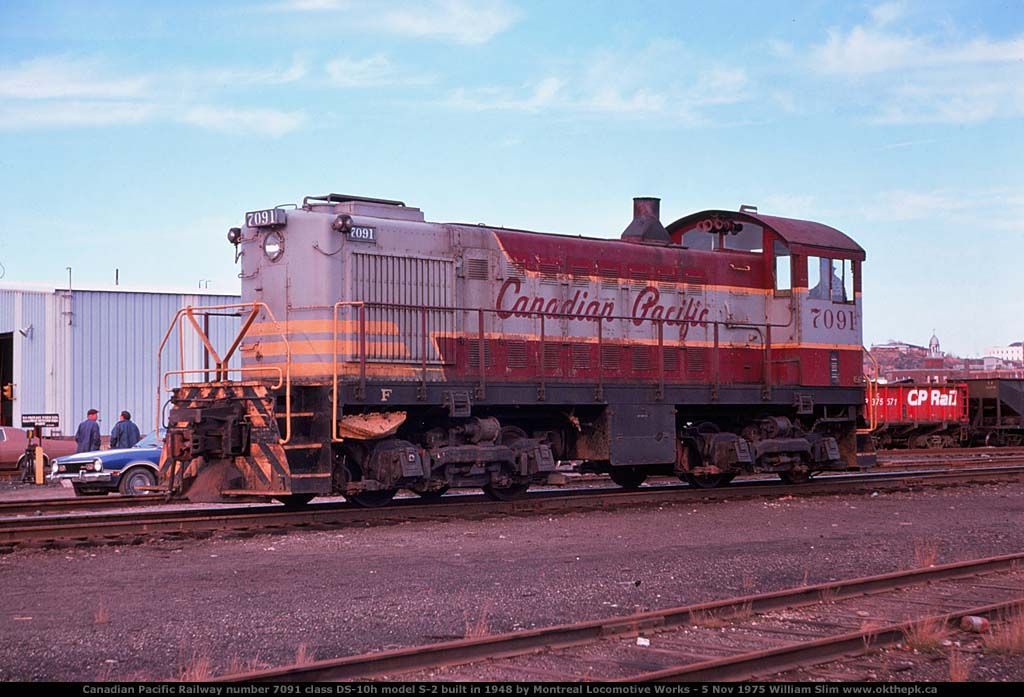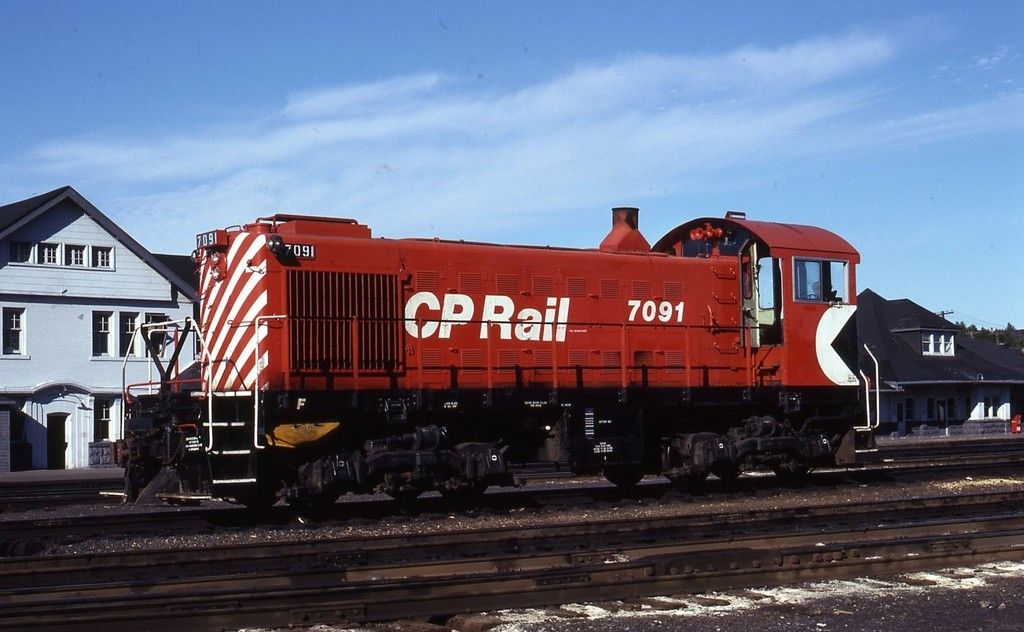Introduction: Genesis of the Action Red Era (Part 1)
The following is a list of CP Rail paint schemes applied to motive power over the course of the Action Red era, with a few photos to help illustrate these variations. A list of references are also included which not only assisted in this research, but come highly recommended as excellent reference materials for all CP Rail modellers.
CP Rail – Action Red Era Variations 1968-1993:
A5L – (Action red / 5” front & rear stripes / Large Multimark)
The original ‘Candy Stripe’ road unit scheme – Sept 1968 to Oct 1975
Entire unit above frame painted Action Red. Frame, and under-frame components painted black. On the front of road switcher and road freight units, the nose, cab and battery box fronts all had 5”-wide alternating red & white stripes, with 5”-wide alternating black and white stripes on back end of unit. Large (full hood height) black & white Multimarks are painted on the rear of any locomotive. Thus the Multimark was direction-dependant, and applied on the long-hoods of locomotives set up for short-hood forward operation, also conversely applied on the short-hoods if set up for long-hood forward operation.
Earliest painted hood diesels (~1968-1971) had the CP Rail logo positioned as far up, and forwards towards the cab as the tall hood access doors allowed. Between 1972 to 1975 the CP Rail was slightly lowered to avoid painting it into the hood access latches. Units lacking rear numberboards had a white number-panel painted on the rear of the unit, with black road numbers applied. Low short-hood units have a black anti-glare panel applied on top of the nose.
Cab units saw red/white striping wrapped around the nose, adjusted for the peculiarities of the curve differences between GM and MLW nose styles. No CLC-built (Fairbanks-Morse) cab units were ever painted Action Red. Multimark heights were lowered to avoid radiator grills. CP Rail placement differed between General Motors and Montreal Locomotive Works cab units, as the portholes and large louvers on GM F-units forced the logos to be placed along the bottom panels. The design of MLW FA- and FB- units allowed for CP Rail logos to be positioned as high and far forward as access doors and radiator grills allowed. Both manufacturer’s B-units had Multimarks painted on the back, but striping on both the front and back were black and white. Logo placement was likewise lowered on GM B-units versus MLW.
- Nearly new M-636 units 4732 and 4705 wear the A5L ‘Candy Stripe’ scheme as delivered from MLW.
- Front end of CP 5017 with early CP Rail logo application at very top of hood doors.
- Back end of CP 5014 with early CP Rail logo application. Note the white rear number bar with black numbers.
- Front of CP 3004 with the post-1972 (lowered) application of the CP Rail logo.
- CP 8597 with long-hood forward road switcher application. Early CP Rail logo positioned as high and towards front as obstructions allow.
- CP 8799 with short-hood forward road switcher application. Post-1972 positioning of logo spaced slightly below box filters.
- CP 1410 displays GM cab-unit application. Louvers and port-holes force CP Rail placement on bottom panel.
- CP 4090 displays MLW cab-unit application. CP logo placed as high and towards front as grills and cab door allow.
- CP 4465 shows B-unit application with small Multimark, and black & white stripes applied to both ends.
A5Mc – (Action red / 5” front & rear stripes / Mid-sized Multimark on cab)
The original ‘Candy Stripe’ switcher scheme – Fall 1968 to Oct 1975
This scheme was applied to all end-cab switchers, along with all SW1200RS and RS-23 road switchers until October 1975. Entire unit above frame painted Action Red. Frame, and under-frame components painted black. Alternating 5″-wide red/white nose stripes, with 5”-wide alternating black/white stripes on entire back end of cab wall. Smaller Multimark (to avoid windows) placed at very rear of cab. Road numbers applied to long hood near cab, with some number height variances which occurred from ‘68 to ‘75. It is best to look at prototype photos if the modeller is painting a particular switcher.
- Regular Sudbury-assigned CP 7090 wearing the original A5Mc switcher scheme.
- CP 7093 shows how the scheme was applied on the backs of MLW S-series units.
- CP 8104 displays the standard application on the back-ends of GM SW1200RS locos.
A5M – (Action red / 5” front & rear stripes / Mid-sized Multimark)
The ‘Ogden Multi’ scheme – Late 1974 to Summer 1975
Locomotives in this scheme don’t really stand out when viewed from the front, especially since the smaller height Multimark was eventually adopted by CP in the ‘wide’ 8″-stripe period (the A8M scheme) after February 1979, and hundreds of GM hood units were painted so. However if you spot a photo with any ‘Candy Stripe’ painted loco displaying a small Multimark, you found something special. And if you see an ‘Ogden Multi’ A5M painted unit viewed from the back, you’ll know instantly.
As mentioned, when viewed from the front the A5M scheme appears the same as any late-applied A5L paint job (with CP Rail logos slightly lowered to avoid hood latches) with the exception of a smaller Multimark. When viewed from the back, the scheme is blatantly obvious as the black/white striping was only applied between the area of the lowered Multimarks. The panel above the height of the Multimark, and the small area below (lined up with the hood access doors) were both painted Action Red. This rear application was a stark difference from the standard ‘Candy Stripe’ scheme.
This variation was only applied by CP’s Ogden Shops in Calgary, and only to GM hood units; where admittedly their radiator screens made painting full-height Multimarks somewhat challenging. The A5M scheme was rare as it was only applied to 48 locomotives over this time frame, and it was not an officially approved scheme. The story was when upper management in Montreal eventually found out, they told Ogden to follow official paint specifications.
- Remarkably, one of CP’s (and Canada’s) only two GP30s received the rare A5M scheme – CP 5001.
- When viewed from the rear, the ‘Ogden Multi’ scheme is obvious, demonstrated by GP35 5024.
- Small Multimarks on wide stripe GP9s were common post-1979, but CP 8487 wears it with candy stripes in 1978. That’s the giveaway of an A5M painted unit.
A8Lf – (Action red / 8” front & rear stripes / Large Multimark with framestripe)
First ‘Wide Stripe’ road unit scheme – Oct 75 to Dec 76
Entire unit painted Action Red. Frame, and under-frame components painted black. This scheme introduced the larger 8″ alternating nose and rear ‘wide stripes’, and only on the front nose (no longer on cab face or battery box fronts). A large Multimark was still applied on the rear of all road units. Also a new white reflective frame stripe was added to the scheme for improved nighttime visibility. Units lacking rear numberboards had black number panels applied with white numbers (reverse of original scheme). CP SD40-2 #5700 was the prototype unit painted (in October 1975) into the A8Lf scheme, followed shortly after by SD40-2’s #5718-5777 delivered direct from GMDD. A number of other older models were also repainted between Oct-75 and Dec-76.
- CP SD40-2 5720 displays its factory-applied AL8f ‘wide stripe’ scheme at Banff AB in 1980.
- CP M-630 4511 sports an A8Lf repaint job, and a bungled Multimark due to upside-down installed grills. Looks like it came out of the shops on a Friday afternoon.
- The first A8Lf painted unit was CP 5700 in Oct-75. Note the rear number panel is now black with white numbers.
A8L – (Action red / 8” front & rear stripes / Large Multimark)
Second ‘Wide Stripe’ road unit scheme – Jan 77 to Feb 79
Essentially the same as the introductory ‘wide stripe’ A8Lf scheme, but without the frame stripe. This was replaced with white reflective circles now applied along the frame across the length of the locomotive. All new General Motors SD40-2 deliveries from January 1977 though to February 1979 came in this scheme, which includes units #5837-64, 5778-99, and 5900-14. A good number of older units were also repainted in the A8L scheme throughout this period, with many missing the reflective circles along the frame.
- CP SD40-2 5904 wears a General Motors factory applied A8L scheme, complete with reflective frame circles.
- Straight SD40 5508 sports a CP-applied A8L repaint scheme at Toronto – Agincourt Yard.
- MLW-built C-424 4230 wears a CP repainted A8L scheme with missing frame circles at Sudbury ON.
A8M – (Action red / 8” front & rear stripes / Mid-sized Multimark)
Third ‘Wide Stripe’ road unit scheme – Feb 79 to Aug 87
Succumbing to the logic of the Ogden shop forces from four years earlier, CP Rail officially began applying smaller Multimarks on all GM hood units system-wide with the introduction of the A8M scheme. However MLW hood units, which didn’t have radiator screens to deal with, continued to receive the full-height A8L Multimark scheme. All new GMDD locomotive deliveries from February 1979 (beginning with SD40-2 #5915) through to August 1987, wore this scheme. This eventually became the longest lasting of all CP Rail paint scheme variations, and was applied to the largest number of units.
- Nearly two years old in this photo, CP 5938 sports a factory applied A8M scheme in 1982.
- CP ‘Torpedo Geep’ GP9 8528 wears the A8M scheme only months after its introduction.
- CP GP30 5000 poses in a freshly applied A8M repaint in 1982.
- GP35 5020 illustrates the rear application of an A8M paint job. Unlike the A5M scheme, striping spans the entire height.
- One could say any wide-stripe repainted CP F-unit wore the A8M variation. FP9 1412 displays a standard application in 1978.
A8Mc – (Action red / 8” front & rear stripes / Mid-sized Multimark on cab)
First ‘Wide Stripe’ switcher scheme – Oct 75 to Mid 78
Entire unit painted Action Red. Frame, and under-frame components painted black. 8″ alternating red/white nose stripes and 8” alternating black/white stripes on back of cab wall. Multimark on cab, with road numbers on long hood near cab. This scheme was applied to end-cab switchers, also SW1200RS and RS-23 road switchers.
- SW1200RS 8158 displays the standard application of the A8Mc scheme.
- CP 8167 illustrates the typical cab-end application of the A8Mc scheme on GM switchers.
A8Mh – (Action red / 8” front & rear stripes / Mid-sized Multimark on hood)
Second ‘Wide Stripe’ switcher scheme – Mid 78 to Aug 87
This switcher scheme variation continued the 8″ alternating red/white nose stripes & black/white cab wall stripes, but now the Multimark was placed on the hood immediately in front of the cab. Consequently the road numbers were placed on the cab sides. Likewise the A8Mh scheme was applied to end-cab switchers, also SW1200RS and RS-23 road switchers.
- CP MLW S-3 6594 sports a fresh A8Mh repaint job at Sudbury ON.
- CP MLW S-2 7092 helps demonstrate the cab-end view of the A8Mh paint scheme.
A8NM – (Action red / 8” front & rear stripes / No Multimark)
The ‘No Image’ Multimark-less scheme – Sept 87 to Mar 93
Sadly the Multimark was officially dropped as the CPR’s corporate logo in 1987, thus it was no longer applied past this point. Additionally the 8″ alternating red/white stripes were now placed on both the nose and rear of the unit. Locomotives lacking rear numberboards now had Action Red number-panels with white numbers applied.
At the introduction of this scheme at least 3 units were mistakenly painted with black/white end striping, with the first one so painted being SW1200RS #8162. SD40 #5513 was one of the first to appear in the proper scheme in late 1987. The only new locomotives delivered in this scheme were GMDD SD40-2F’s #9000-9024.
- CP M-636 4742 wears a fresh A8NM ‘No Image’ paint job at Bensonville IL in 1992.
- Smaller 4-axle diesels like rebuilt GP9 8206 seemed to wear the austere A8NM scheme better.
References:
- 1) Garden, J.F., “Nicholas Morant’s Canadian Pacific”, Footprint Publishing, 1992.
- 2) Lewis, Donald C., “Rail Canada Vol.3, Diesel Paint Schemes of the CPR”, LPD Publishing, 2nd 1998.
- 3) Zuters, Gary, “CP Rail 1993 Review”, Hyrail Productions 1994.
- 4) Dean, Murray and Hanna, David, “Canadian Pacific Diesel Locomotives”, Railfair Publishing, 1981.
- 5) Russell, Larry G., “CP Rail Diesel Locomotive Roster”, Extra 2200 South magazine: issues 81 – 83 (first two parts are most important), 1984-85.

